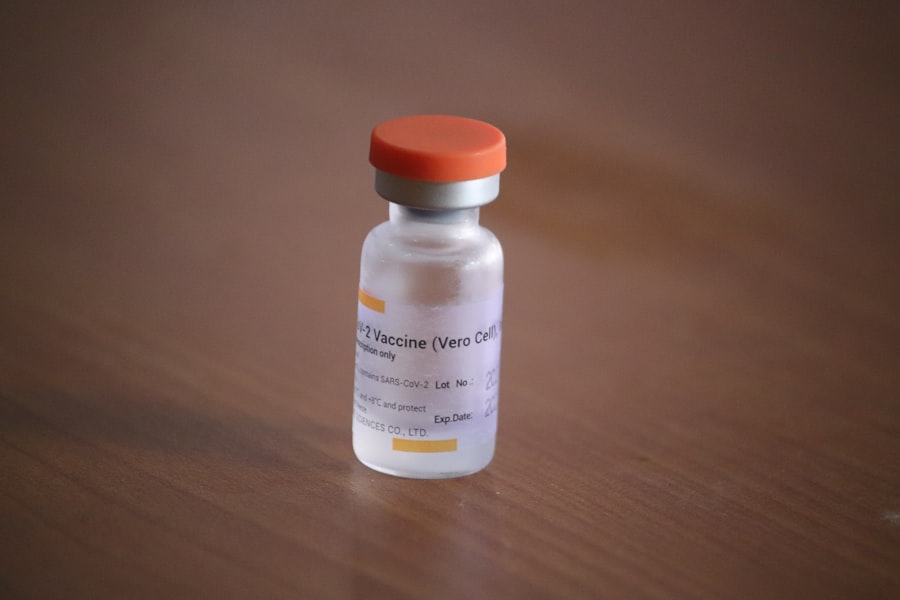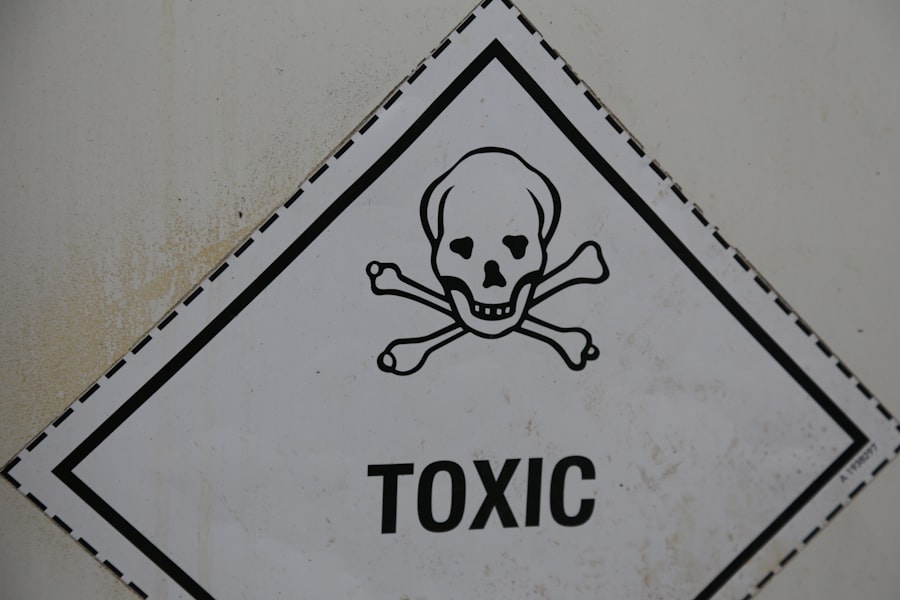Nightshades are a diverse family of plants known scientifically as Solanaceae. This family includes a variety of fruits and vegetables that are staples in many diets around the world. You may be familiar with some of the most common nightshades, such as tomatoes, potatoes, eggplants, and bell peppers.
These plants thrive in various climates and are cultivated for their nutritional value and culinary versatility. While they are enjoyed by many, nightshades have also garnered attention for their potential health implications, particularly concerning a compound called solanine. The term “nightshade” is derived from the plant’s association with the night, as some species bloom in the evening or have a reputation for being toxic.
Despite this ominous name, many nightshades are safe to eat and provide essential vitamins and minerals. However, it is essential to understand the characteristics of this plant family, especially if you have concerns about food sensitivities or specific health conditions. By learning more about nightshades, you can make informed choices about including them in your diet.
Key Takeaways
- Nightshades are a family of plants that contain alkaloids, including solanine, which can be toxic in high amounts.
- Solanine is a toxic compound found in nightshade vegetables, particularly in the leaves, stems, and unripe fruits.
- Common nightshade vegetables include tomatoes, potatoes, eggplants, and bell peppers, among others.
- Solanine toxicity can occur when nightshade vegetables are consumed in large quantities or when they are not prepared or stored properly.
- Symptoms of solanine toxicity may include nausea, vomiting, diarrhea, headaches, and in severe cases, difficulty breathing and heart issues.
What is Solanine?
Solanine is a naturally occurring glycoalkaloid found in various nightshade plants. It serves as a defense mechanism for the plant, protecting it from pests and diseases. While solanine is present in small amounts in many nightshades, it can become concentrated in certain parts of the plant, particularly in the leaves, stems, and unripe fruits.
You might be surprised to learn that solanine is most commonly associated with potatoes, especially when they turn green or sprout. This green coloration indicates the presence of solanine and should be taken seriously. Understanding solanine is crucial for anyone who consumes nightshades regularly.
While most people can enjoy these foods without any adverse effects, solanine can be toxic in high concentrations. The body metabolizes solanine differently than other compounds, which can lead to various health issues if consumed in excess.
Which Vegetables are Nightshades?

When you think of nightshades, several vegetables may come to mind. The most popular among them include tomatoes, potatoes, eggplants, and bell peppers.
Tomatoes are often celebrated for their juicy sweetness and versatility in sauces and salads. Potatoes are a staple carbohydrate source worldwide, available in numerous varieties that cater to different culinary needs. Eggplants bring a rich, creamy texture to dishes like ratatouille or baba ghanoush, while bell peppers add a crisp crunch and vibrant color to salads and stir-fries.
In addition to these well-known vegetables, other members of the nightshade family include chili peppers, goji berries, and tomatillos. Each of these foods contributes distinct flavors and nutritional benefits to your meals. However, if you have sensitivities or health concerns related to nightshades, it’s essential to be aware of all the varieties that fall under this category.
By understanding which vegetables are classified as nightshades, you can make informed decisions about your diet and explore alternatives if necessary.
How does Solanine Toxicity Occur?
| Toxic Component | How it Occurs |
|---|---|
| Solanine | Found in green potatoes and other nightshade vegetables, solanine toxicity occurs when these vegetables are consumed in large quantities or when they have turned green due to exposure to light. |
| Symptoms | Can include nausea, vomiting, diarrhea, stomach cramps, and in severe cases, confusion, headache, and even coma. |
| Treatment | Usually involves supportive care, such as rehydration and symptom management, as solanine toxicity is rarely fatal. |
Solanine toxicity occurs when you consume an excessive amount of solanine, typically through the ingestion of green or sprouted potatoes or other nightshade plants with high solanine levels. The toxicity can also arise from consuming parts of the plant that are not typically eaten, such as leaves or stems. When solanine enters your system in significant quantities, it can interfere with cellular functions and lead to various health issues.
The risk of solanine toxicity increases when nightshade vegetables are improperly stored or prepared. For instance, potatoes that are exposed to light may develop green patches where solanine concentration rises. Additionally, consuming unripe fruits from nightshade plants can pose a risk as well.
It’s crucial to be vigilant about how you handle and prepare these foods to minimize the chances of solanine toxicity affecting your health.
Symptoms of Solanine Toxicity
If you experience solanine toxicity, you may notice a range of symptoms that can vary in severity depending on the amount consumed. Common symptoms include nausea, vomiting, diarrhea, and abdominal pain. You might also experience headaches, dizziness, or confusion as your body reacts to the toxin.
In more severe cases, solanine toxicity can lead to neurological symptoms such as hallucinations or paralysis. Recognizing these symptoms early is vital for addressing potential toxicity effectively. If you suspect that you have consumed a significant amount of solanine or are experiencing any of these symptoms after eating nightshades, it’s essential to seek medical attention promptly.
Understanding the signs of solanine toxicity can help you take appropriate action before complications arise.
Who is at Risk?

While most people can consume nightshades without any adverse effects, certain individuals may be more susceptible to solanine toxicity or experience negative reactions to these foods. Those with autoimmune conditions or inflammatory disorders may find that nightshades exacerbate their symptoms due to the presence of alkaloids like solanine. If you have conditions such as arthritis or irritable bowel syndrome (IBS), you might want to monitor your intake of nightshade vegetables closely.
Additionally, individuals with specific allergies or sensitivities may also be at risk when consuming nightshades. If you notice gastrointestinal discomfort or other adverse reactions after eating these foods, it may be worth consulting with a healthcare professional to determine if you should limit or eliminate nightshades from your diet. By understanding your unique health needs and potential risks associated with nightshades, you can make informed dietary choices that support your overall well-being.
How to Minimize Solanine Toxicity
To minimize the risk of solanine toxicity while enjoying nightshades, there are several practical steps you can take. First and foremost, always inspect your vegetables before consumption. For potatoes, avoid those with green patches or sprouts; these indicate higher levels of solanine.
If you do find green areas on a potato, it’s best to cut them away before cooking or consuming the vegetable. Proper storage is also crucial in reducing solanine levels in nightshades. Store potatoes in a cool, dark place away from direct sunlight to prevent greening.
Similarly, keep other nightshade vegetables like tomatoes and eggplants in a cool environment to maintain their freshness and minimize any potential toxin buildup. By being proactive about how you select and store your nightshade vegetables, you can significantly reduce your risk of solanine toxicity.
Cooking Nightshades to Reduce Solanine Levels
Cooking methods can play a significant role in reducing solanine levels in nightshade vegetables. Boiling or frying potatoes can help lower their solanine content since heat breaks down some of the toxins present in the vegetable. However, it’s essential to note that cooking does not eliminate all traces of solanine; therefore, starting with fresh and properly stored potatoes is still crucial.
For other nightshade vegetables like tomatoes and eggplants, cooking can enhance their flavors while also making them easier to digest for some individuals who may experience discomfort when consuming them raw. Roasting or grilling these vegetables can bring out their natural sweetness while minimizing any potential risks associated with solanine consumption. By incorporating various cooking methods into your meal preparation, you can enjoy the benefits of nightshades while reducing any associated risks.
How to Store Nightshades Safely
Storing nightshade vegetables properly is essential for maintaining their quality and minimizing the risk of solanine toxicity. As mentioned earlier, potatoes should be kept in a cool, dark place away from sunlight to prevent greening. Ideally, they should be stored in a breathable bag or container that allows air circulation while keeping them away from moisture.
Tomatoes should be stored at room temperature until they ripen fully; once ripe, they can be refrigerated for short-term storage but should be consumed quickly for optimal flavor and texture. Eggplants should also be kept in a cool environment but should not be refrigerated for extended periods as this can lead to spoilage. By following these storage guidelines for each type of nightshade vegetable, you can ensure that they remain fresh and safe for consumption.
Seeking Medical Attention for Solanine Toxicity
If you suspect that you have ingested a significant amount of solanine or are experiencing symptoms associated with toxicity after consuming nightshades, it’s crucial to seek medical attention promptly. Healthcare professionals can provide guidance on managing symptoms and determining whether further treatment is necessary based on your specific situation. In cases where symptoms are severe or persistent—such as prolonged vomiting or neurological issues—immediate medical intervention may be required to prevent complications from arising.
Being proactive about your health and recognizing when to seek help is vital for ensuring your well-being after potential exposure to solanine.
Enjoying Nightshades Safely
In conclusion, nightshades offer a wealth of flavors and nutritional benefits that can enhance your meals when consumed safely. By understanding what nightshades are and being aware of the potential risks associated with solanine toxicity, you can make informed choices about including these vegetables in your diet. Remember to inspect your produce carefully, store it properly, and utilize cooking methods that help reduce any potential toxins.
If you have specific health concerns or experience adverse reactions after consuming nightshades, consider consulting with a healthcare professional for personalized advice tailored to your needs. With proper knowledge and precautions in place, you can enjoy the delicious world of nightshade vegetables while minimizing any associated risks—allowing you to savor their unique flavors without worry.
Solanine toxicity is a concern when consuming certain nightshade vegetables, such as potatoes and tomatoes, which can lead to symptoms like nausea, vomiting, and neurological disturbances if ingested in large amounts. For those interested in learning more about the effects of solanine and how it impacts health, a related article can be found on the Explore Senior Health website. This article provides valuable insights into the potential risks associated with solanine and offers guidance on how to safely include nightshades in your diet. You can read more about it by visiting this page.
Over 60? Ditch THIS Sneaky Veggie Wrecking Digestion, Bloating, and Microbiome Balance.
FAQs
What are nightshades?
Nightshades are a family of plants that includes tomatoes, potatoes, eggplants, and peppers. They are known for their edible fruits and are commonly used in cooking.
What is solanine?
Solanine is a toxic compound found in nightshade plants, particularly in the leaves, stems, and green parts of the plant. It acts as a natural defense mechanism against pests and predators.
How does solanine affect the body?
Ingesting high levels of solanine can cause symptoms such as nausea, vomiting, diarrhea, stomach cramps, headache, dizziness, and in severe cases, it can lead to respiratory failure and death.
Which nightshade plants contain solanine?
Plants such as potatoes, especially green potatoes, and their sprouts, as well as tomatoes, eggplants, and peppers, contain solanine. However, the levels of solanine in these plants are generally low and not harmful when consumed in normal amounts.
How can I reduce the risk of solanine toxicity from nightshades?
To reduce the risk of solanine toxicity, it is recommended to avoid consuming green or sprouted potatoes, and to properly store and prepare nightshade plants before consumption. Cooking and peeling potatoes can also help reduce solanine levels.
